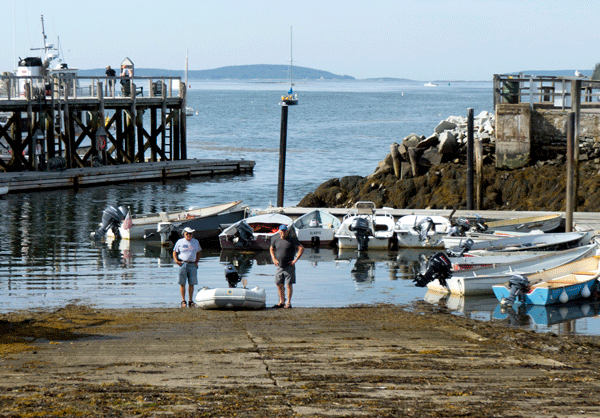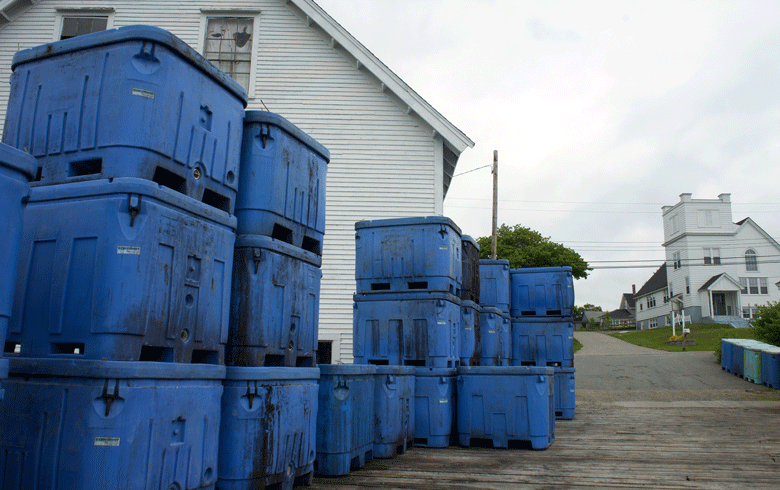The state budget adopted in early summer dedicates $40 million to the Land for Maine’s Future program and at least ten percent of that money will be used to preserve working waterfront access for commercial fishing.
Historically, the land access preservation program is funded through voter-approved bond referenda, but the legislature and governor agreed to fund it without seeking voter approval.
Legislative leadership and the governor’s office “decided there was enough revenue in the budget” to warrant direct funding of the program, said Jeff Romano of Maine Coast Heritage Trust, who assists with the LMF work.

The commitment of at least $4 million toward securing protective easements for privately and publicly held fishing access sites is being cheered by advocates for preserving working waterfronts. Maine’s 3,500-mile coast only has about 20 miles of access for commercial fishing and aquaculture operations.
“We’re actually buying something. They’re selling the state their development rights.”
—Deirdre Gilbert
The money will be awarded through a competitive process that includes the Department of Marine Resources scoring proposals and making recommendations to the Land for Maine’s Future board, said LMF director Sarah Demers. Since it began in 1990, the program has provided $9.6 million to applicants for working waterfront preservation, she added. This component of the program has been included in LMF funding in 2005, 2007, 2010, and 2012. An average LMF expenditure for securing a covenant is $250,000, said Deirdre Gilbert, director of marine policy for DMR.
The program is structured so a private, nonprofit, or municipal owner of a wharf or landing area is paid to renounce the right to develop the property for a use that is not fishing related, such as housing or commercial structures like restaurants or hotels. The access is secured permanently through an easement attached to the deed which cannot be revoked. Recreational use is often allowed, but it is understood as an ancillary activity at a site winning funding.
“It’s not a grant program,” said Gilbert. “We’re actually buying something. They’re selling the state their development rights.”
Property owners are willing participants in the transaction and typically, they use the LMF funds to reinvest in capital improvements to the site or equipment, she said.
In awarding funds, the primary consideration by the LMF board is access, Demers said, with the amount of commercial uses there also a factor. Most of the awards go toward shorefront properties, but sometimes, land adjacent to the site is included.
Waterfront property in Spruce Head won funding in one round, she said, then in a subsequent round, it was awarded money for a parking area.
“It’s a policy statement from the people of Maine that working waterfronts are critical components of our economy,” Demers said of the decision to dedicate at least $4 million to the program.
Lobster coops, which typically own wharfs, floats, buildings, fuel tanks, and land, have been awarded funding through the program. Among those, said Gilbert, are coops in: Bremen, Friendship, Westport, Pemaquid, Port Clyde, South Bristol, Spruce Head, and Vinalhaven.
Over the years, some coops have been wary of participating in the program, she said, but when their board members converse with their counterparts at coops that have been funded, they see its value.
“They inherently understand that they have a long-term interest in retaining access,” Gilbert said.
“We see pretty decent geographic representation,” Demers said of the location of applicants. And to date, every proposal has been funded.
“We’ve had tremendous support from legislators,” Gilbert said of the program, and the public understands that working waterfronts “are under threat of conversion.”
The LMF board meets on Sept. 24 to set a timeline for proposals and awards, Demers said.





